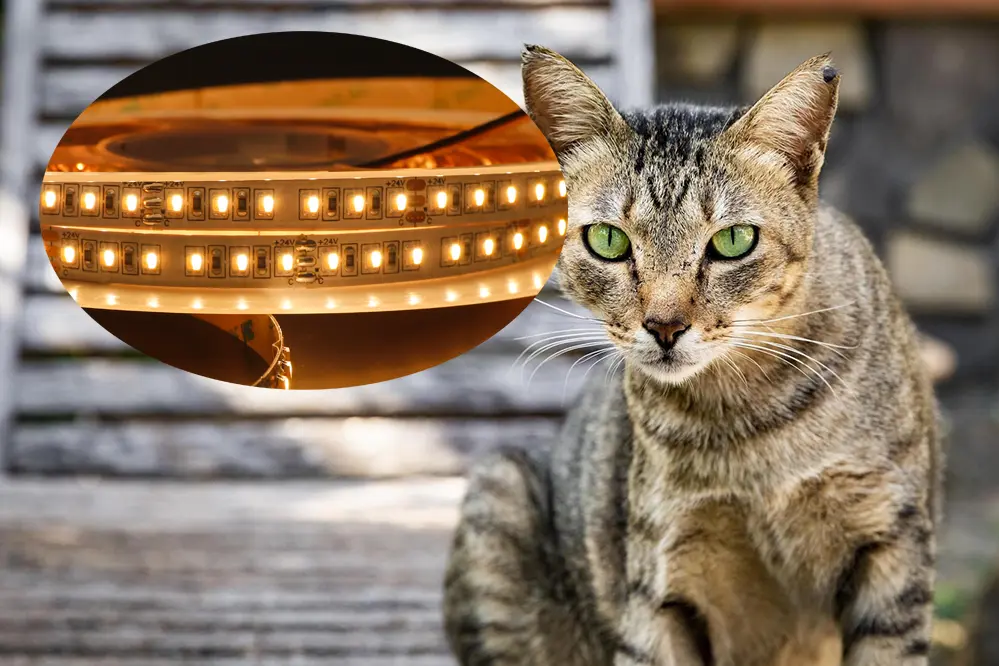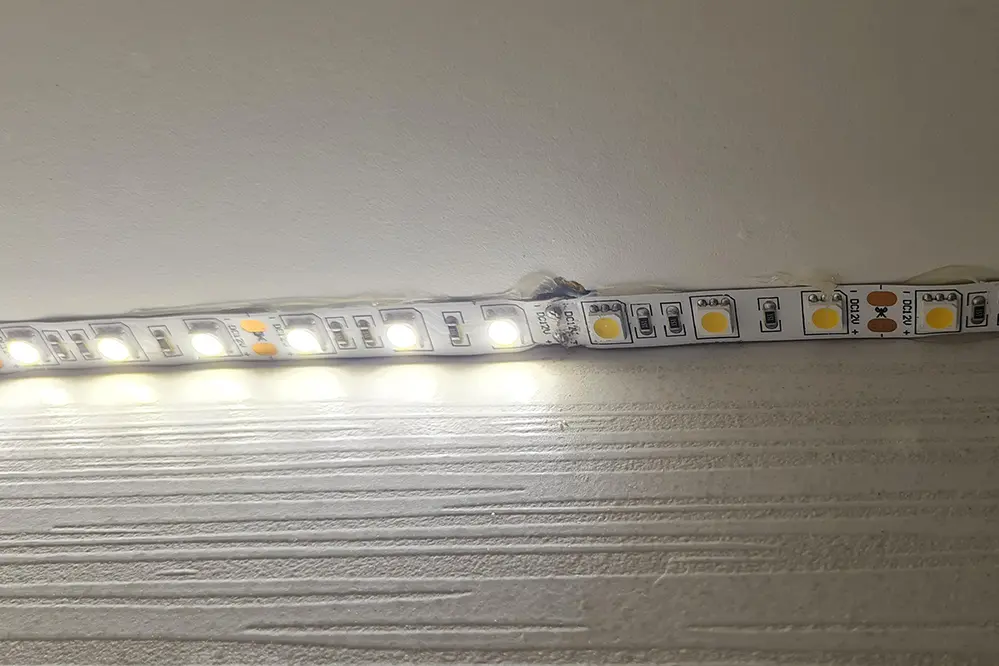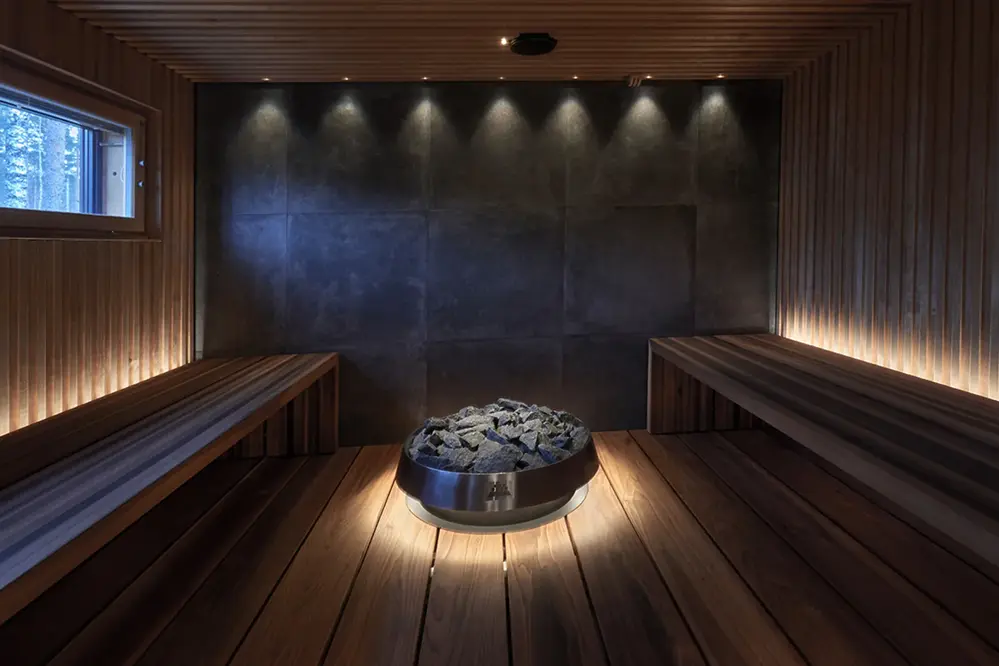Welcome to our blog post titled “Are LED Strip Lights Bad for Cats?” If you’re a lighting enthusiast or professional, you’ve probably wondered about the safety concerns surrounding LED strip lights and their impact on our feline friends. Well, you’ve come to the right place! In this post, we will uncover the truth and provide you with expert insights on this topic.
LED strip lights can potentially pose risks to cats, especially if the intense brightness affects their eyes if not used properly. While LED lights themselves are generally safe, certain factors such as the intensity of the light, exposure duration, and proximity to the cat can affect their well-being. It’s important to understand these factors and take necessary precautions to ensure the safety of your furry companions.
So, if you want to learn more about the potential risks of LED strip lights for cats and how to mitigate them, keep reading! We will delve into the specific concerns, provide practical tips, and offer guidance to help you create a cat-friendly lighting environment without compromising on your lighting preferences.
Understanding LED Strip Lights
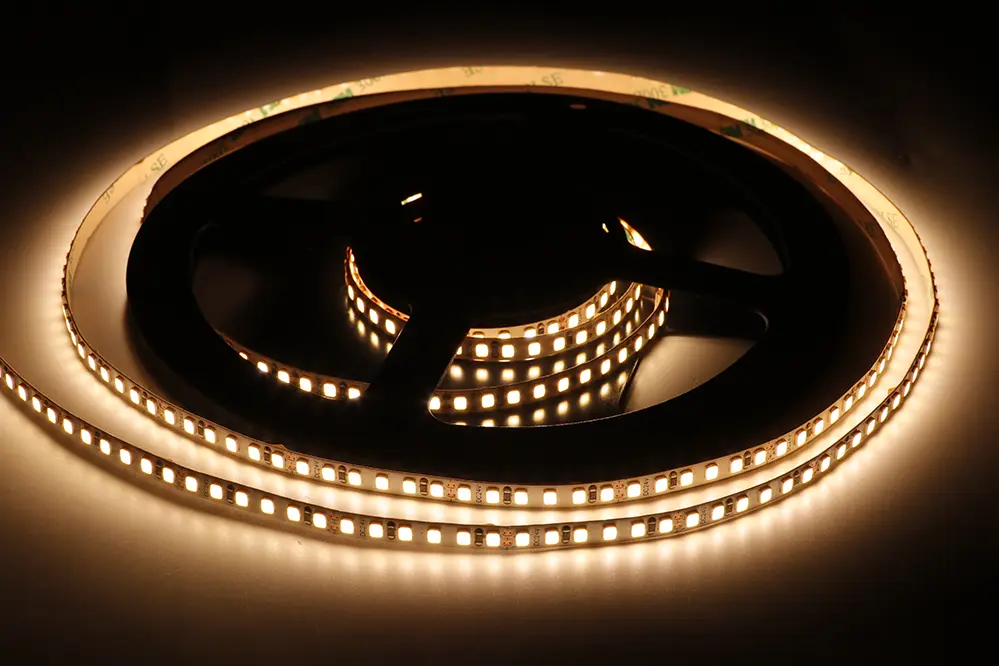
LED strip lights with LED lights are highly efficient, low voltage light sources that provide a continuous band of illumination through the use of mounted Light Emitting Diodes (LEDs). Their flexible circuit boards enable them to be installed in a multitude of spaces, thus offering a plethora of creative lighting solutions, but a bad installation can pose risks to pets. The spectral composition and intensity of these lights can be tailored to various applications, with an emphasis on both functionality and aesthetic appeal.
This type of lighting technology does not inherently emit ultraviolet (UV) rays or infrared radiation, which are wavelengths often associated with potential harm to biological tissues. The risk of thermal damage is also typically minimal with LEDs due to their low heat output, making them more suitable for enclosed or intimate spaces.
Components and Function
LED strip lights integrate LEDs on a flexible circuit board—maximizing adaptability—suited for dynamic illumination applications.
Compact yet potent, LED lights in LED strips efficiently convert electricity into light, though a bad heat sink design could reduce their safety profile.
In essence, these devices utilize semiconductor materials to produce light when current passes through, unlike traditional incandescent bulbs that use filaments.
The flexibility of LED Lights Strips allows for conforming around various structures—providing consistent, even lighting—while affording significant control of light intensity and color spectrum.
Light Emission Characteristics
LED strip lights display distinctive emission traits significant in understanding their safety with feline exposure.
- Color Spectrum: LED strip lights can produce a wide range of colors, including variations cats can see, without emitting UV radiation.
- Brightness Levels: The intensity can be adjusted, a factor that should be tuned to avoid startling or discomforting cats.
- Flicker Frequency: High-quality LED strips have a lower flicker rate, reducing potential stress or disorientation in cats.
These emission factors do not include harmful wavelengths but may still impact a cat’s comfort and behavior.
Careful installation and usage of LED strip lights are crucial to ensure they pose no threat to feline wellbeing due to light characteristics.
Impact on Feline Vision
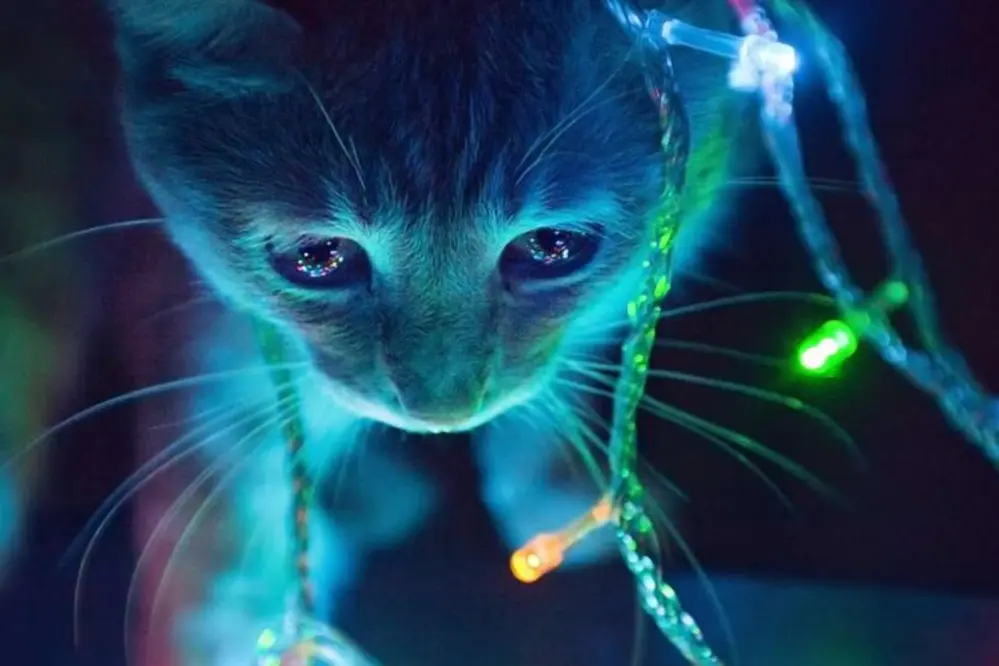
Cats possess a unique vision system considerably sensitive to light variations and movements due to a high number of rod receptors.
Given their nocturnal nature, exposure to intense or harsh lighting conditions from LED strips may lead to discomfort in their eyes or even anxiety, necessitating careful modulation of light emission around them.
Especially, rapid changes or high-intensity “on-off” cycling should be avoided to prevent potential confusion or visual stress.
LED Light Spectrum and Cat Eyesight
Cats’ visual perception is keenly attuned to the ultraviolet segment of the spectrum, beyond human capabilities. Consequently, they can detect certain light frequencies that we are blind to, impacting how LED lighting is experienced.
LEDs generally emit limited ultraviolet light compared with other sources.
The spectral power distribution of LEDs often shows a spike in the blue light region, which could be more pronounced to a cat’s eyesight. Such characteristics necessitate a thoughtful selection of LED lights, striving to align with the comfortable visual range for our feline companions without causing overstimulation.
It’s critical that the luminous efficacy of LED lighting is considered, referring to the ratio of lumen output to power consumption. Despite the energy efficiency, the intensity and color temperature of the luminaire are of paramount concern. LED strips must be carefully calibrated to mimic the spectral qualities of natural daylight as closely as possible, to harmonize with the sensitive visual systems of cats. In this context, brands offering “warmer” color temperatures and diffused light emission patterns may be preferred to prevent any adverse effects on the well-being of the animals.
Flicker Sensitivity in Cats
Cats possess a highly sensitive visual system, capable of detecting rapid movements and slight flickers faster than the human eye.
- High flicker frequency: LED lights with a low flicker rate can cause visual discomfort or stress.
- Temporal resolution: Cats can resolve flickers at frequencies humans perceive as constant light due to their superior temporal resolution.
- Light modulation: The pulse width modulation (PWM) technique in LED dimming can exacerbate flicker effects when not properly managed.
LED strip lights often employ pulse width modulation (PWM) for dimming, which can produce a flicker effect that cats may find disturbing.
A responsible choice in LED lighting takes into account the flicker sensitivity of cats, ensuring a flicker-free experience to promote their well-being.
Behavioral Effects on Cats
Cats may exhibit signs of distress if exposed to lighting that disrupts their natural behaviors, such as hunting or resting. It is crucial to understand the influential role that lighting plays in a cat’s life, as it affects not only their vision but also their internal rhythms and moods.
In the instance of LED strip lights with intense LED lights, which can be intensely bright or emit light at strobe-like frequencies, cats might react with confusion or anxiety. This is particularly true if the LEDs are not diffused properly or if they flash or change colors unpredictably, leading to disruptions in a cat’s environmentally cued activities.
To prevent negative behavioral effects, it is advisable to opt for LEDs with a high color rendering index (CRI) and smooth dimming capabilities. This ensures a more natural lighting environment for felines, mitigating the potential for light-induced stress or behavioral abnormalities.
Attraction to Light and Potential Hazards
Felines possess a natural predilection for tracking and pouncing upon flickering lights, akin to their instinctive hunting practices. LED strip lights, with their dynamic brightness and colors, may trigger an irresistible allure, heightening a cat’s predatory instincts and prompting erratic behaviors.
Brightly illuminated LEDs can be quite disorienting for felines. Constant exposure may lead to undue stress and confusion.
Moreover, cats drawn to the glow of LEDs may run the risk of physical harm, particularly when (unshielded electrical components or adhesive materials are within reach) and become attractive nuisances.
Repeated encounters with these artificial light sources may contribute to excessive stimulation or compulsive disorder tendencies, altering their natural sleep cycles and impacting overall well-being.
The possibility of ocular damage exists when cats stare directly into intense LED illumination, potentially leading to discomfort or more severe concerns if exposure persists over an extended period.
Therefore, it’s vital to balance a cat’s curiosity with their safety, understanding and mitigating the inherent risks associated with their fascination with LED strip lights.
Stress Indicators Linked to LED Exposure
Excessive exposure to LED lights can manifest as observable stress behaviors in cats.
- Appetite Changes: A decrease or increase in feeding patterns.
- Excessive Vocalization: Increased meowing or yowling, especially at night.
- Aggression: Sudden, uncharacteristic aggression towards humans or other animals.
- Hide and Seek: More frequent hiding or avoidance behaviors.
- Sleep Disturbance: Alterations in sleep patterns, including restlessness or insomnia.
- Over-Grooming: Compulsive licking, biting, or fur pulling.
These signs indicate a disruption in the feline’s environment or well-being.
Properly managing LED light exposure can help reduce these stressors for cats.
Ensuring Feline Safety
When contemplating the addition of LED strip lights in environments shared with feline companions, it is imperative to prioritize their well-being. Given the sensitive nature of cats’ vision and their instinctual attraction to light, it is essential to install these illumination sources in a manner that prevents direct staring or prolonged gaze. Additionally, strategic placement high out of reach, coupled with the usage of light diffusers, can mitigate potential retinal stress and behavioral disturbances. Monitoring your cat’s interaction with the lights and promptly adjusting the lighting setup or intensity will help ensure an ambiance that is both aesthetically pleasing and safe for all occupants.
Safe Installation to Avoid Accidents
When installing LED strip lights in homes with cats, secure cabling is critical. Open or dangling wires pose a risk of entanglement or choking if a cat gets curious and starts to play.
It’s crucial to avoid loose ends or exposed adhesive. These could be attractive nuisances to a playful feline.
Select a location for your LED strips that is out of paws’ reach. The goal is to prevent direct contact with the lights that could result in burns, or, worse, a cat inadvertently ingesting pieces of the strip if they manage to tear it down.
When choosing an installation spot, consider the trajectory of the light. It should not be in a direct line of sight to where your cat frequents to avoid undue eye strain. Additionally, opt for a method of securing your lighting that is robust and able to withstand the curiosity of your pet. This might include protective channels or covers over the strips, or even embedding the lighting within furniture or architecture. Remember, safety in installation not only protects your cat but also preserves the integrity and longevity of your lighting solution.
Choosing Cat-Friendly Lighting Options
Select LED strips with low heat emission.
Pet safety should be a paramount concern when installing lighting. LED strips with low heat emission are beneficial as they reduce the risk of burns should a cat come into direct contact. Moreover, low heat contributes to the durability of the strips, ensuring a longer lifespan.
Install lights away from curious felines.
Ensuring the positioning of LED strips is inaccessible to cats – be it behind enclosures or out of reach – lowers the likelihood of a pet-related incident, enhancing safety for both the animal and the integrity of your lighting system.
Utilize cat-safe adhesive and coverings.
Selecting non-toxic adhesives and robust coverings for LED strips can prevent potential ingestion, minimizing the hazard to cats and ensuring that your lighting remains intact and functional.
Monitor the intensity and color of light.
Adjusting the brightness and colors of LED lighting to levels that are comfortable and safe for feline eyes is essential. Recent studies in 2023 have indicated that softer lighting may be more conducive to pets’ wellbeing, suggesting that owners should thoughtfully calibrate their lighting choices, potentially including the use of a timer for automatic adjustments, to suit the sensitivities of their feline companions.
Conclusion
In conclusion, LED strip lights can be a safe lighting option for homes with cats, as long as proper precautions are taken. By securely fastening fixtures, choosing low-emission lights, controlling access to the installation area, using non-toxic materials, and protecting cables and connectors, you can ensure the well-being of your feline companions while enjoying the benefits of LED illumination.
Remember, the key is to prioritize your cat’s safety and make informed decisions when integrating LED strip lights into your home. By following these guidelines, you can create a harmonious environment where cutting-edge lighting technology and curious household pets can coexist peacefully.
So go ahead and enhance your living space with the versatility and customization options that LED strip lights offer, all while keeping your furry friends safe and happy. With the right precautions in place, you can enjoy the aesthetic and practical benefits of LED illumination without compromising the welfare of your beloved cats.
